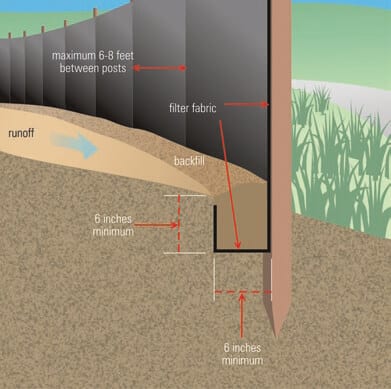For several decades, silt fences have controlled surface erosion and sediment in streams. Submar often uses these during construction to allow water to flow without moving sediment.
The Impact of Soil Erosion
Soil erosion has been a significant issue for years and can cause higher rates of runoff, loss of newly planted crops, and deposits of silt in lower areas.
Due to these significant and negative impacts, soil erosion measuring and prevention techniques have been created. However, they can become quite costly and can take a lot of time to correctly implement.
Site Selection
When using silt fencing as a method to help prevent soil erosion, find an area with a more uniformed slope where there are few obstructions to fencing installation.
The location of the silt fencing should also be easily accessible so that maintenance can be performed if necessary.
Additionally, silt fencing is only applicable to help determine erosion rates on hillsides, not measuring erosion rates where there is a continuous flow of water like around a stream.
Silt Fence Installation
When it is time to install the silt fencing to measure soil erosion rates, a trench is dug, and fill is placed downhill. Fabric is then laid along the bottom and sides of the trench, following all OSHA guidelines for safety. The soil can then be packed back into the trench as a way to hold the fabric that was laid down.
Stakes are then driven between four and six feet apart and approximately six inches below the trench. The fabric is then attached to the stakes to act as an area that can effectively hold any sediment that may exist. The sediment will accumulate behind the fencing. Learn more about Submar’s experience protecting pipelines with proven pipeline erosion control and streambank stabilization techniques when you read our case studies. (link to https://submar.com/projects/)


